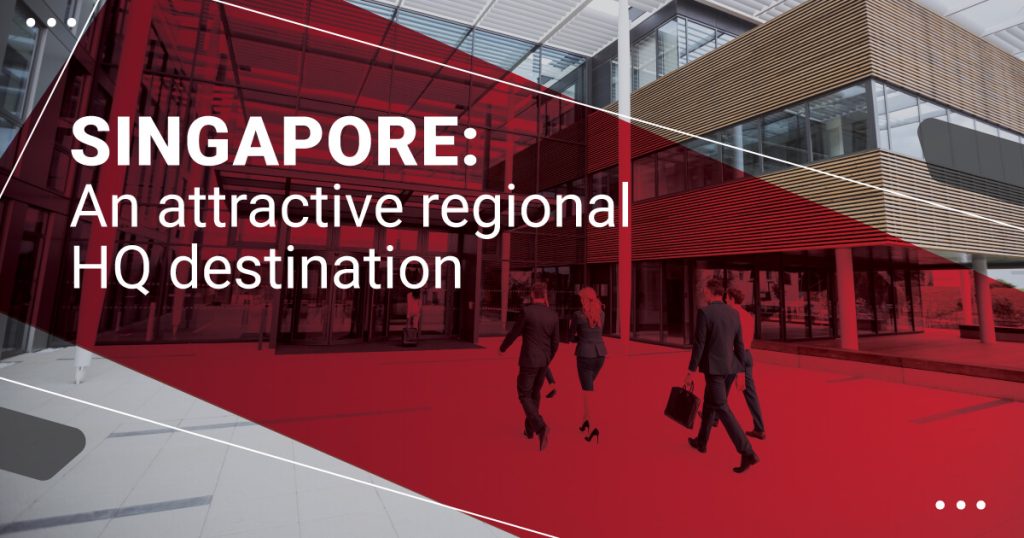Are traditional command and control corporate structures still relevant in a post-COVID-19 world? This is an important question that businesses need to tackle, as they re-think and re-organize their operations to ride the wave of post-COVID-19 recovery. Businesses need to find an optimal balance that allows them to address three priorities in their regional business HQ, to determine if they need to pursue further decentralization or centralization. These priorities include business agility, operational resilience, and pre-positioning for growth in new or untapped markets. So, if we juxtapose these priorities against the backdrop of Southeast Asia as an attractive high-growth market, how should businesses organize themselves then?
Business Agility and Operational Resilience Underpins Competitive Advantage
To answer this question, it is critical to understand the value and necessity of business agility, and how it impacts operational resilience. The height of COVID-19, during which widespread supply chain disruptions were common occurrences, offers a good illustration. Back then, businesses with (more) agile operating models were better equipped to weather those challenges thrown by the escalating pandemic. This in turn ensured business continuity. In my conversations with many business leaders, they have consistently highlighted that business agility is not only a function of a business’s decision-making process. More importantly, it must also encompass business processes and operational structures. To increase business agility, another common consideration that business leaders emphasize is the need for empowered local teams. These local teams ought to be given the flexibility to pivot their strategies according to the changing local market needs and operating environments. As the global economy recovers from COVID-19, this pandemic is a reminder that businesses will continue to face new challenges that threaten their bottom lines. Business agility, and enhanced operational resilience, as a result, will put businesses to be in better positions to mitigate these challenges These two aspects will help businesses strengthen their competitive advantage vis-à-vis their competitors.
Why Agility is Needed in a High-Growth Market like Southeast Asia?
As businesses hunt for new growth markets, their attentions are increasingly focused on Southeast Asia. Southeast Asia has strong fundamentals as a market and production base. As a bloc, Southeast Asia is projected to be the world’s fourth-largest economy by 2030. The region has a combined population of more than 650 million people, with the middle class making up approximately 60%. As their disposable income rise, so will their spending and consumption patterns towards more aspirational goods and services. However, businesses need to realize that the Southeast Asian market is not monolithic. This melting pot of demographics and cultures in the region creates the need for businesses to be closer to the markets to better understand consumer needs. Based on these market insights, businesses can then tailor their innovation and market penetration strategies to deliver just-in-time market-centric solutions. In a nutshell, businesses need to be agile to win in a new and emerging market like Southeast Asia.
To Centralise More Through Decentralisation: Singapore as a Business HQ in Southeast Asia
To win in Southeast Asia, businesses need to dedicate market-focused resources and react more quickly to evolving (market) needs and dynamics. This creates a need for more centralization, especially in key business activities, such as research and development, supply chain, and strategic planning. However, this is “centralization with a twist”. As compared to centralizing these business activities in their headquarters, businesses are increasingly pursuing greater “centralization by regions”. Besides building agility into their operating models at the onset of market expansion, this approach also enables businesses to streamline their resource allocations to drive innovation and business growth.
Singapore’s status as a global business hub puts the country in a strong position to play the role of a natural business headquarters for Southeast Asia. Businesses’ experience from the COVID-19 episode meant that many are prepared to incur a premium to base their operating headquarters in Singapore. This ‘flight to safety behavior stems from businesses placing greater value on stability and supportive pro-business government policies. For businesses that plan to make this move, they can also potentially tap on enabling business incentives. One example is the International Headquarters (“IHQ”) program. This incentive program is managed by the Singapore Economic Development Board and is intended to support companies that set up or expand their international or regional headquarters activities in Singapore. Similarly, the Research and Innovation Scheme for Companies (“RIS(C)”) may also be applicable to companies that plan to carry out innovation-related activities in Singapore for global and/or regional commercialization, from Singapore.
If your business is looking to enter and/or expand in Southeast Asia and is looking to establish your business headquarters in Singapore, InCorp Global is well-placed to assist you. Our team of qualified incorporation specialists has subject-matter expertise across the business value chain, from incorporation to structuring and corporate incentive advisory. Please feel free to reach out to us here, to kickstart a conversation on how InCorp Global can assist.
Contact our team
FAQs
- Yes, the Singapore Government offers many tax and funding incentives for businesses to expand their capabilities and operations by establishing a regional HQ in Singapore.
- Southeast Asia is a melting pot of different cultures, demographics, and consumer behaviors. Businesses hoping to succeed in the region need to be agile and adaptive to address the diverse needs and desires of each sub-region's population.
- As the current third-largest economy in the world and the most rapidly expanding, Southeast Asia is primed to see massive growth over the next decade, in a period where the US, EU and China markets may see slowed or stagnated growth. Businesses seeking to expand their operations would find it worthwhile to explore Southeast Asia as their next destination.



